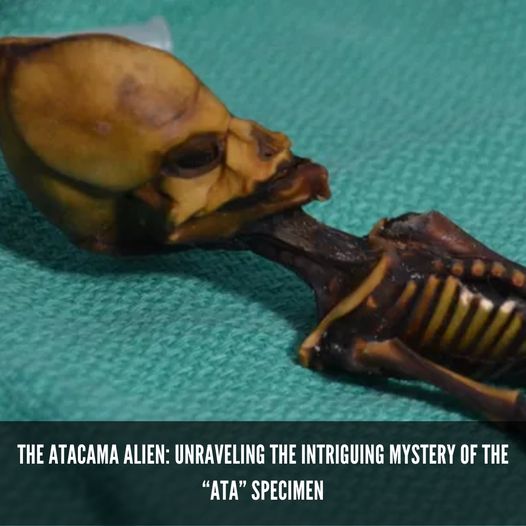In 2003, a perplexing discovery was made in the Atacama Desert of Chile—an unusual humanoid specimen that came to be known as the Atacama Alien or simply “Ata.” With its peculiar features and small stature, Ata quickly sparked widespread interest and controversy among researchers, skeptics, and enthusiasts alike. Join us as we delve into the mysteries surrounding the Atacama Alien, exploring its origins, scientific analysis, and the enduring questions that surround this enigmatic specimen.
Discovery and Appearance
The Atacama Alien was reportedly discovered by a local resident in the ghost town of La Noria. Measuring only six inches in length, it possesses a humanoid form with distinct features such as a large head, elongated skull, oversized eye sockets, and a lack of visible external ears. Its skeletal structure and physical characteristics intrigued researchers and raised intriguing questions about its nature and origin.
Scientific Examination and Controversy: Extensive scientific examination of the Atacama Alien has been conducted, including DNA analysis and radiographic imaging. Initial DNA tests indicated that it contained human DNA, sparking theories of a potential extraterrestrial origin. However, subsequent studies revealed that Ata’s DNA sequences were human in nature but exhibited anomalies and mutations, leading to speculation about genetic disorders or unknown genetic variations.
Multiple theories have been proposed to explain the nature of the Atacama Alien. Some suggest that it may be a fetus or premature human child with severe deformities. Others propose genetic or chromosomal disorders that resulted in its distinct physical characteristics. However, the exact cause of its unique appearance and genetic makeup remains a subject of ongoing debate.
The discovery of the Atacama Alien has sparked ethical debates regarding the handling and analysis of such specimens. Critics argue that the handling of the remains has been disrespectful or exploitative, while others maintain that scientific examination is necessary to shed light on the specimen’s origin and potentially contribute to medical knowledge.
While scientific analysis leans toward human origins for the Atacama Alien, some proponents of extraterrestrial theories suggest that it could be evidence of ancient contact or genetic manipulation by advanced civilizations. However, the lack of substantial evidence and the scientific consensus on its human nature make these hypotheses highly speculative.

Legacy and Ongoing Research
The Atacama Alien continues to captivate public interest, with ongoing discussions, research, and documentaries exploring its mysteries. Researchers and scientists strive to further analyze its genetic makeup, medical implications, and potential contributions to our understanding of human genetics and development.
The Atacama Alien, with its unusual appearance and enigmatic origin, remains a subject of fascination and debate. While scientific analysis indicates its human nature and suggests genetic abnormalities, the exact circumstances surrounding its existence and unique features continue to elude us. As research and investigation into the Atacama Alien persist, it serves as a reminder of the enduring mysteries and questions that lie at the intersection of science, speculation, and the unexplained.
